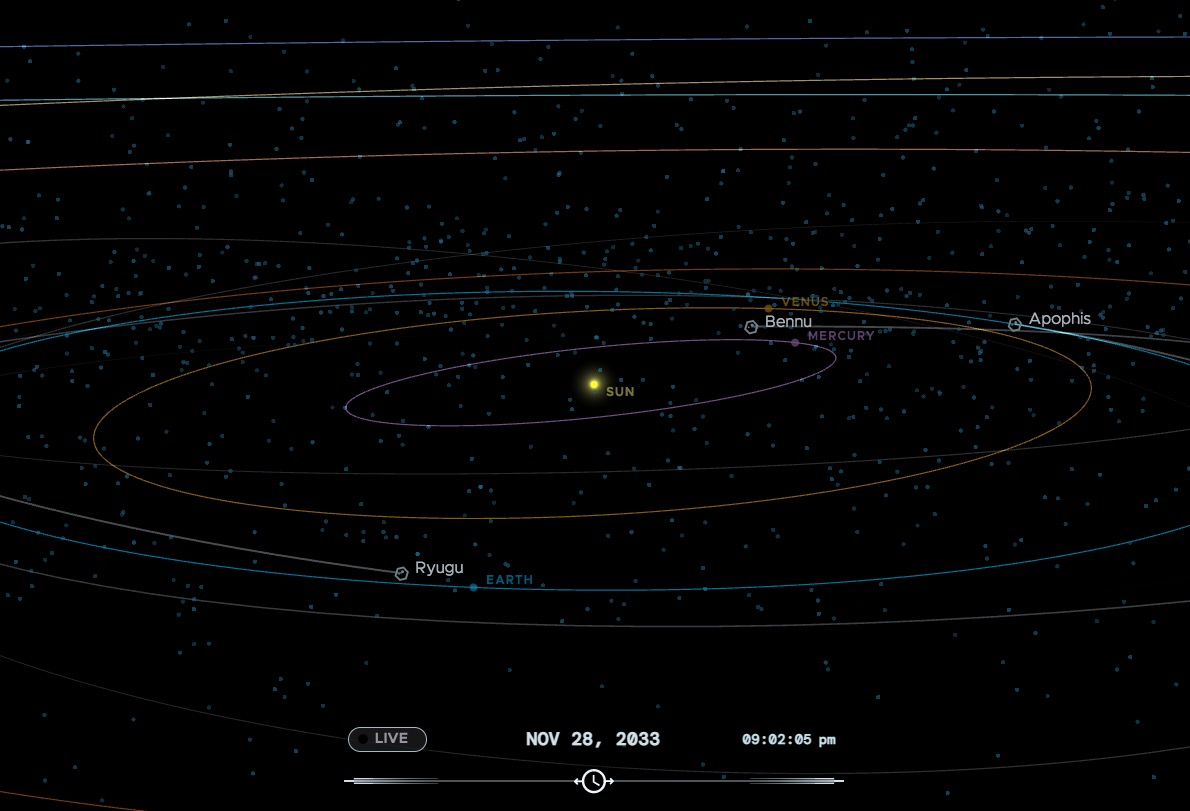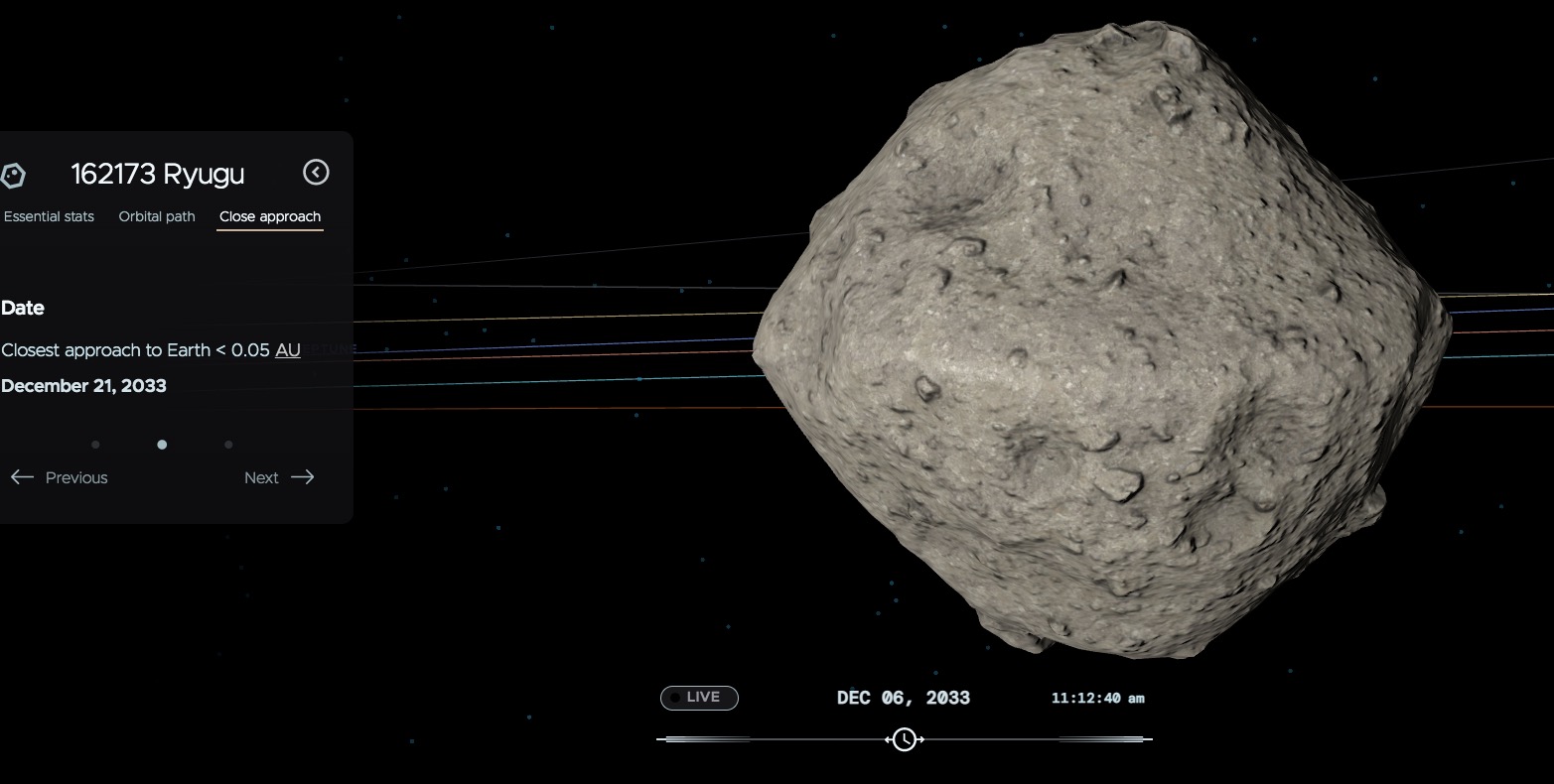It looks like you're using an Ad Blocker.
Please white-list or disable AboveTopSecret.com in your ad-blocking tool.
Thank you.
Some features of ATS will be disabled while you continue to use an ad-blocker.
Fallout from NASA's DART mission could hit Earth — potentially 1st human-caused meteor shower
page: 14
share:
I found this really interesting. Not supposed to be as bad as the movie Armageddon, with Bruce Willis running around, but the fact that humans have
caused it. What if one of those tiny rocks hit the Space Station? Would it damage it? If a big asteroid was really coming, would we get the
blowback?
LiveScience
LiveScience
We had a pretty extensive thread here on ATS and it was pretty cool to watch its impact. JPL and NASA IIRC seemed fairly confident it would not cause
any more wear and tear than our satellites and space station already receive.
Sounds as if the fragments will be so small they won't even show up as "shooting stars".
Being ATS some here speculated the mission was them attempting to alter its course as it was going to be a threat in the far future
eyes.nasa.gov...#/home
what's weird the asteroid sentry orbital models end December 31st at midnight 2033, right after Ryugu makes an extremely close pass through Earth's own orbital path.



Sounds as if the fragments will be so small they won't even show up as "shooting stars".
Being ATS some here speculated the mission was them attempting to alter its course as it was going to be a threat in the far future
eyes.nasa.gov...#/home
what's weird the asteroid sentry orbital models end December 31st at midnight 2033, right after Ryugu makes an extremely close pass through Earth's own orbital path.



originally posted by: gortex
a reply to: putnam6
Sounds as if the fragments will be so small they won't even show up as "shooting stars".
Correct , but that's should we actually encounter them which I think is unlikely.
Yes exactly, from the article
www.livescience.com... aused-meteor-shower
The ejected fragments are harmless because of their diminutive size — between 0.001 inches (30 micrometers) and 4 inches (10 centimeters) across. But their arrival in Earth's atmosphere could trigger a new light show in the night sky.
"If these ejected Dimorphos fragments reach Earth, they will not pose any risk," study lead author Eloy Peña-Asensio, an aerospace engineer and astrophysicist at the Polytechnic Institute of Milan in Italy, told Universe Today. "Their small size and high speed will cause them to disintegrate in the atmosphere, creating a beautiful luminous streak in the sky."
Dozens of larger rock fragments (circled) were spotted in the aftermath of the DART/Dimorphos collision. But none are currently headed for Earth.
However, there is still some uncertainty about when these fragments will reach us or when they will be visible.
The smallest fragments, which are likely traveling at speeds up to 3,350 mph (5,400 km/h), could reach us within seven years but will likely be too tiny to create any shooting stars in the sky, researchers wrote in the paper. But the larger fragments, which could be spotted as they burn up in the atmosphere, are moving more than four times slower and might not arrive for more than 30 years.
If and when these larger fragments arrive, they could create a brand new meteor shower, which the researchers have preemptively nicknamed the "Dimorphids." However, we won't know if this will really happen until these pieces start getting much closer to our planet.
Almost all meteor showers are from the debris trails of comets that periodically perihelion the Sun. The meteor showers are caused by Earth passing
through these orbital trails on a yearly basis.
The debris scattered by the DART mission is absolutely miniscule compared to what is in orbit from comets. Apart from comet debris, past huge impacts on asteroids, moons and planets in the solar system in the past have brought us virtually every meteorite we find on Earth today and small meteoroids can never make it through our atmosphere.
Debris from DART will orbit forever just like every impact event big enough to cast material from the gravitational influence of any parent body, but the amount of material is relatively nothing compared to what is out there that has accumulated from the past 4.6 billion years.
Assuming that the impact caused debris to instantaneously exceeded escape velocity from the asteroid, as it could never accelerate more than that, it would radiate out in a somewhat uniform sphere, except for the area occluded by the asteroid itself. Disregarding the gravitational influence of other planets and the Sun, the density of ejected material should follow the inverse square rule, meaning that the density of dust particles in the leading edge of the debris sphere would be inversely proportional (reduced) to the square of the distance encountered as it travels away from the asteroid.
At that rate, the Earth would be lucky to encounter one dust particle, if any!
The debris scattered by the DART mission is absolutely miniscule compared to what is in orbit from comets. Apart from comet debris, past huge impacts on asteroids, moons and planets in the solar system in the past have brought us virtually every meteorite we find on Earth today and small meteoroids can never make it through our atmosphere.
Debris from DART will orbit forever just like every impact event big enough to cast material from the gravitational influence of any parent body, but the amount of material is relatively nothing compared to what is out there that has accumulated from the past 4.6 billion years.
Assuming that the impact caused debris to instantaneously exceeded escape velocity from the asteroid, as it could never accelerate more than that, it would radiate out in a somewhat uniform sphere, except for the area occluded by the asteroid itself. Disregarding the gravitational influence of other planets and the Sun, the density of ejected material should follow the inverse square rule, meaning that the density of dust particles in the leading edge of the debris sphere would be inversely proportional (reduced) to the square of the distance encountered as it travels away from the asteroid.
At that rate, the Earth would be lucky to encounter one dust particle, if any!
edit on 29-8-2024 by charlyv because: sp
new topics
-
New York Governor signs Climate Law that Fines Fossil Fuel Companies
US Political Madness: 34 minutes ago -
Meta Llama local AI system is scary good
Science & Technology: 5 hours ago -
This is why ALL illegals who live in the US must go
Social Issues and Civil Unrest: 7 hours ago -
UK Borders are NOT Secure!
Social Issues and Civil Unrest: 8 hours ago -
Former ‘GMA Producer’ Sues NPR-Legacy Media Exposed
Propaganda Mill: 10 hours ago -
New Footage - Randy Rhoads 1979 LIVE Guitar Solo Footage at the Whisky - Pro Shot
Music: 11 hours ago -
Happy Hanukkah…
General Chit Chat: 11 hours ago
top topics
-
This is why ALL illegals who live in the US must go
Social Issues and Civil Unrest: 7 hours ago, 16 flags -
Former ‘GMA Producer’ Sues NPR-Legacy Media Exposed
Propaganda Mill: 10 hours ago, 9 flags -
Happy Hanukkah…
General Chit Chat: 11 hours ago, 8 flags -
UK Borders are NOT Secure!
Social Issues and Civil Unrest: 8 hours ago, 6 flags -
New Footage - Randy Rhoads 1979 LIVE Guitar Solo Footage at the Whisky - Pro Shot
Music: 11 hours ago, 5 flags -
Meta Llama local AI system is scary good
Science & Technology: 5 hours ago, 5 flags -
New York Governor signs Climate Law that Fines Fossil Fuel Companies
US Political Madness: 34 minutes ago, 3 flags
active topics
-
New York Governor signs Climate Law that Fines Fossil Fuel Companies
US Political Madness • 2 • : charlest2 -
FAA Investigates Christmas Drone Show Gone Wrong in Orlando, FL 12/2024
Other Current Events • 13 • : Astrocometus -
This is why ALL illegals who live in the US must go
Social Issues and Civil Unrest • 20 • : Astrocometus -
DefCon Teetering on Escalation
World War Three • 53 • : annonentity -
Putin Compares Himself to Jesus Promoting Traditional Values Against the Satanic West
Mainstream News • 76 • : WeMustCare -
Trump says ownership of Greenland 'is an absolute necessity'
Other Current Events • 52 • : cherokeetroy -
Meta Llama local AI system is scary good
Science & Technology • 15 • : LogicalGraphitti -
Happy Hanukkah…
General Chit Chat • 21 • : JJproductions -
RFK JR endorses Trump
2024 Elections • 46 • : WeMustCare -
Mood Music Part VI
Music • 3766 • : Skinnerbot
4
